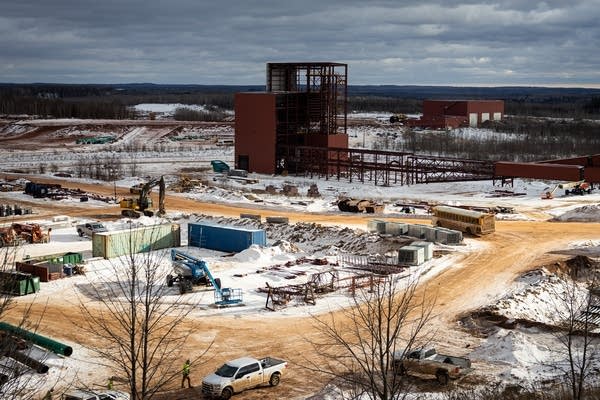Partnerships may pave the way to a more environmentally focused future in the mining industry

Construction equipment sits on the Mesabi Metallics construction site near Nashwauk, Minn., on Monday, Jan. 27, 2025.
Ben Hovland | MPR News
Go Deeper.
Create an account or log in to save stories.
Like this?
Thanks for liking this story! We have added it to a list of your favorite stories.


